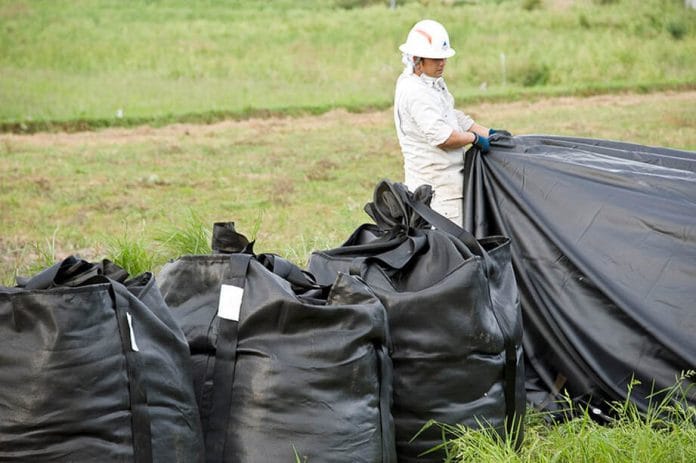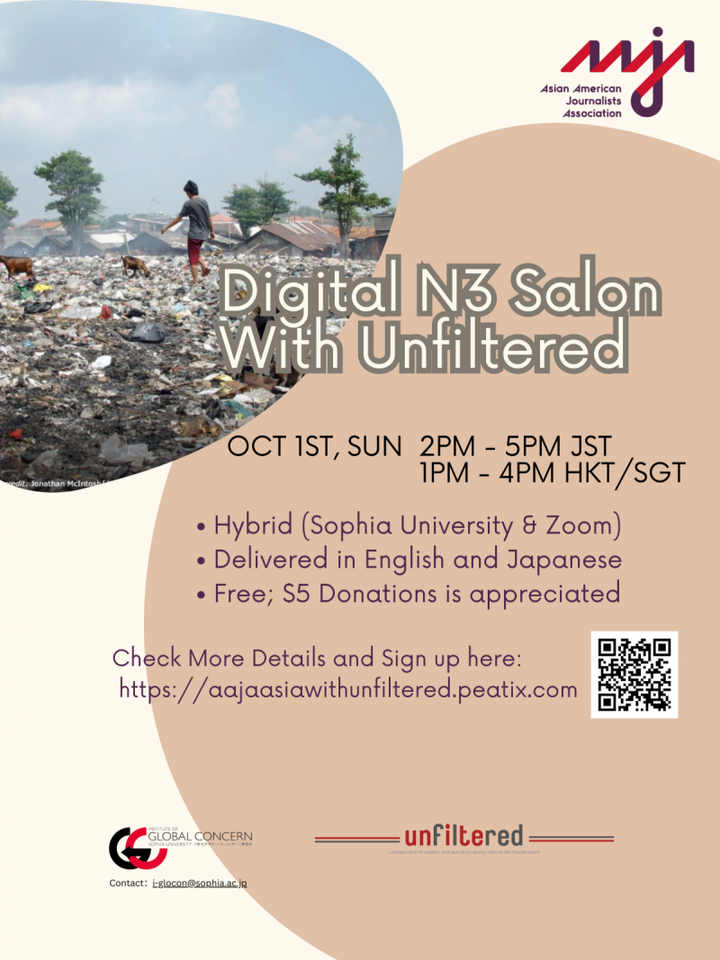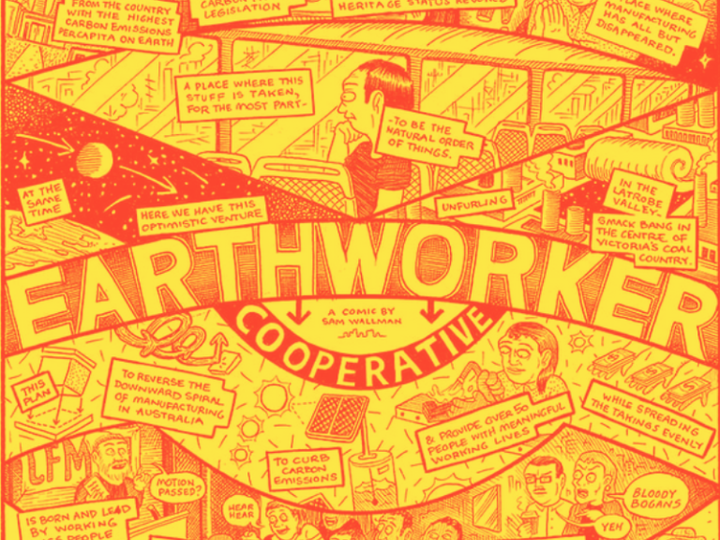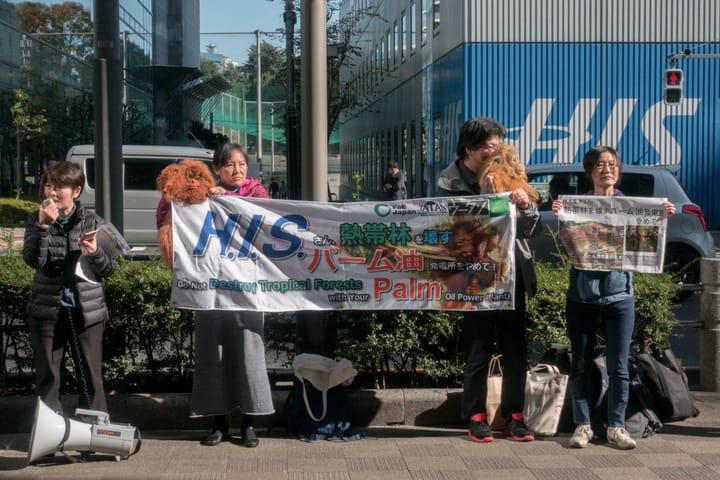Questions raised about progress, safety of Fukushima decontamination work

As radiation levels fell, public sector workers evacuated during the 2011 Fukushima nuclear disaster were ordered to return and push on with decontamination work. But was it as “safe” as they were led to believe?
As decontamination work proceeded in the aftermath of the Fukushima nuclear disaster and the radiation aggregate fell below 20 microSieverts (mSv) per year, the evacuation order was lifted because such dose levels were officially deemed “safe.”
As a consequence, many public servants who had been evacuated from parts of the contaminated “no-go” zone were told to return.
However, the real working conditions for those forced to work in places areas where radiation levels continued to be high remained unclear. In this series, we take a look at that situation, investigating if proper radiation exposure control and health care management is being carried out properly and talking to workers who have been instructed to return to areas where officials say radiation levels are “Below 20 mSv.”
In this issue we spoke to Yoshio Hatakeyama, who works at the forest management station in Fukushima Prefecture, a local branch of the Forestry Agency.
The job description of those working in forest management office says such workers are charged with duties to “cultivate forests, sell timber for profit, and to replenish forests by planting trees.” So naturally enough, the workplace for these people is the forests.
Yoshi Hatakeyama (not his real name) has worked at several management offices in the Kanto Koetsu region since he was taken on by the Forestry Agency and says while these goals remain, not all forestry work is the undertaken under the same conditions.
“Our job is to develop forests and sell timber – this is is what we used to do in the past,” says Hatakeyama, who is in his 40s. “Some 70% of Japan’s land is forests, and 40% of that is national forests. Fukushima Prefecture is almost the same as the national average, meaning that much of the forests you see beyond the roadsides are national forests.”
The big difference in Fukushima, however, is that workers are required to carry dosimeters – devices that measure radiation levels in the immediate environment.
Like every other forests, Fukushima’s felled timber is sold, and after logging, afforestation takes place and there is a long period of time thereafter before the new lumber can be sold. Hatakeyama is involved in such long-term operations.
As a manager and supervisor Hatakeyama is only required to actually enter the forests about once a week. But his offices are right on the frontline of forestries operations.
And on the occasions when he does enter the mountains, he is always prepared. “I always take a dosimeter, but I don’t wear a radiation badge,” he says of the most common forms of personal radiation monitoring devices, the latter being a film badge dosimeter used for monitoring cumulative radiation dose of the individual wearing it.
there is no way of measuring the longer term amount, or kind of radiation to which workers have been exposed.
Despite these precautions, there are no “whole-body counters,” larger devices used to identify and measure the radioactive materials that can accumulate in the body over time. This means there is no way of measuring the longer term amount, or kind of radiation to which he has been exposed.
Other types of radiation detectors, such as Geiger Counters, can help forestry workers detect just how much radiation has accumulated in any particular area. “Currently, trees are being logged in an area where the airborne radiation dose is below 0.5 microsieverts (µSv) per hour,” he says. “Anything above that and surveys need to be undertaken and any places where levels are above 2.5 µSv per hour cannot be entered during normal operations.”
Of the radioactive materials present, the most common is caesium, which is found mostly in the soil, he says. “Soil with radiation above 2.5 µSv has a radiation dose of 10,000 becquerels (Bq) per kilogram, or more,” he says.
The becquerel is the unit used to measure radioactivity and as a comparison, during food safety tests in the aftermath of the Fukushima disasters, the Japanese government set an upper limit for radioactive caesium in ordinary foodstuffs, such as meat and vegetables, at 100 becquerels per kilogram. However, those levels are strict compared with the 1,250Bq/kg level set in the European Union and 1,200Bq/kg in the US.
Many researchers and local activist groups say soil contamination in parts of Fukushima remain high.
Charged with supervisory operations, Hatakeyama is not required to undertake any of the actual logging work, which is carried out by outsourced forestry entities like the local forestry cooperative. However, he is involved in surveying the forests for lumber to be logged.
“When surveying wood in the forest, it may take about six hours each time,” he says.
Nonetheless, he says he is not so concerned about the dust and other materials he breaths in while undertaking such operations.
He also stressed that he was unsure whether or not the logging contractors wore any dosimeters or other monitoring devices while carrying out their work.
Asked if the contractors are given instructions by the authorities regarding such issues Hatakeyama says: “Although (logging) contracts stipulate that guidelines for preventing radiation risk should be observed, radiation levels in the areas where logging operations are carried out are below 2.5 µSv per hour and there is no system in place to check whether those measures are being properly observed.”
Logging operations are carried out by three teams, one doing the chain saw work, another operating heavy equipment and one more involved in transportation work. Hatakeyama says he does not know exact numbers but believes there are probably about four to five workers involved in each group. “After planting trees in the forest, you are required to enter the mountains quite a bit. It takes a lot of work to grow trees, including cutting away any undergrowth.”
According to Hatakeyama, operations can be carried out unconditionally if the airborne radiation dose measures under 0.5 µSv per hour, and for any timber located in areas where doses are between 0.5 to 1.0 µSv / h bark samples must be secured to carry out radiation dose tests before deciding if operations can proceed.
The current standard dictates that logging cannot take place in areas where radiation of 1.0 to 2.5 µSv per hour and anywhere above 2.5 µSv is completely off limits, he says.
Each area is measured not by Hatakeyama’s management office but by a specialist, outsourced company, he says. “Those people are also required to go into high-dose areas,” he says. “However, last year we also experienced disasters such as landslides and forest fires and so on, and when they occur, we will enter areas with pretty high radiation. When the dosimeter alert is set off, I feel like I must get out of there as quickly as possible.”
According to Hatakeyama there are radiation hotspots. “Basically forests have not been decontaminated,” he says.
Naturally, wood that has been logged from Fukushima forests is contaminated, which provides a dilemma for an outfit such as Hatakeyama’s whose main objective is earning income from the selling of lumber.
However, just as with Fukushima’s foodstuff industry, the lumber market has developed monitoring stations that can measure the radiation levels in the wood. “Timber from all over the country is distributed and enters the market, but it is inspected and shipped (during that distribution process,” Hatakeyama says.
In the case of wood chip any materials exceeding a level of 100 Bq per kg cannot be shipped – the same level as Fukushima food produce, which is frequently monitored. “I think there is lumber (that exceeds that limit).”
Asked if workers are concerned about the radiation levels, Hatakeyama says that recently, the number of workers from outside the prefecture has increased, and many managers have moved from other prefectures.
Awareness of such workplace issues has started to wane, he says. “There are occasions when I forget to take a dosimeter with me when I enter the forest area, so I no longer worry so much.”


